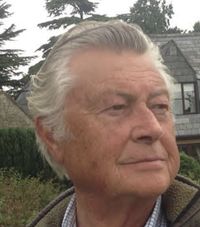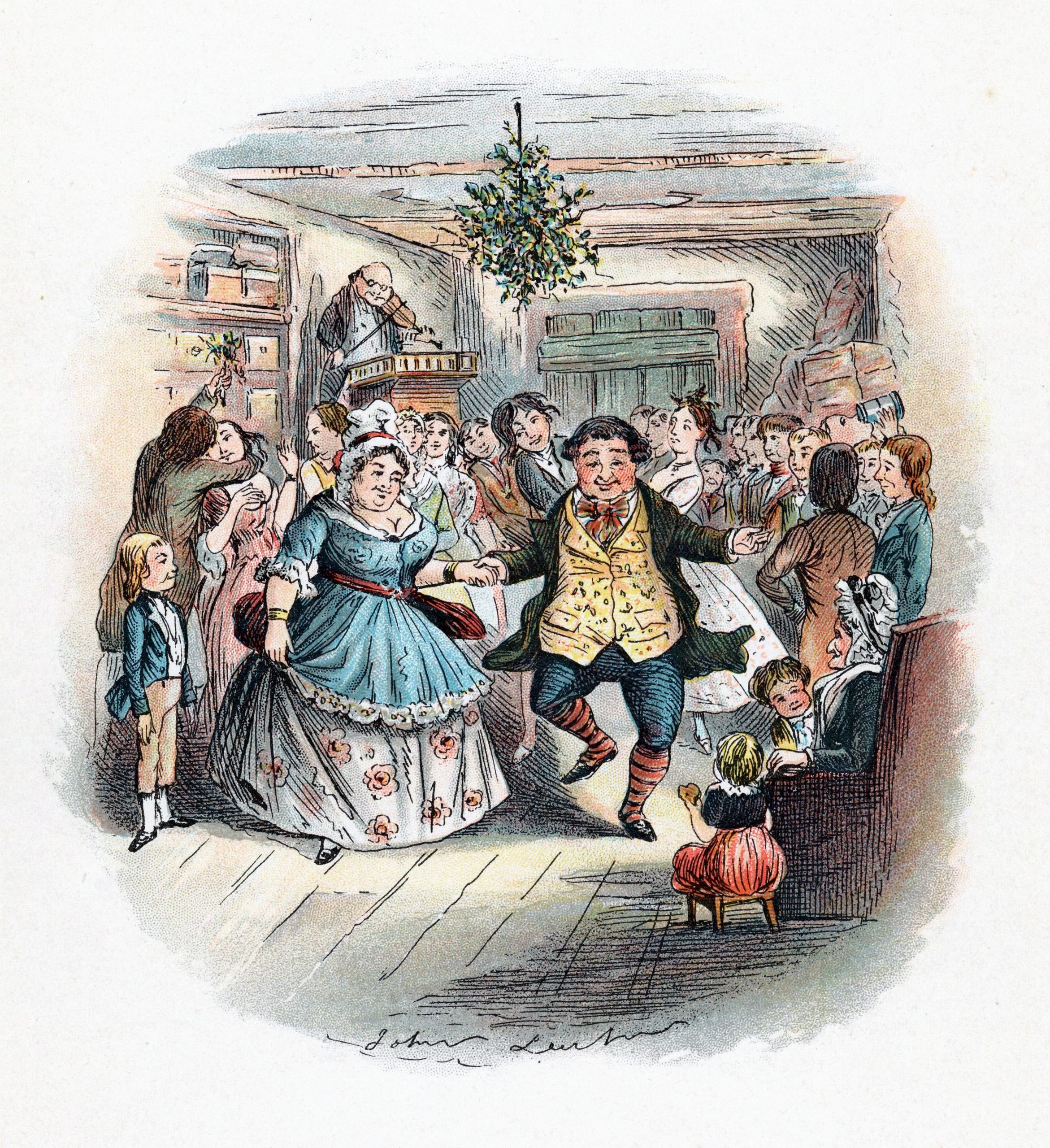Curious Questions: Why do we kiss under the mistletoe?
Peaking at Christmas, regard for mistletoe is deeply rooted in myth and legend, finds Ian Morton – not to mention the age-old tradition of kissing underneath it.


It's one of those Dickensian passages that conjures up exactly how we envisage Victorian jollity at Christmas: ‘From the centre of the ceiling, old Wardle had just suspended with his own hands a huge bunch of mistletoe, and this same branch of mistletoe instantaneously gave rise to a scene of general and most delightful struggling and confusion, in the midst of which Mr Pickwick, with a gallantry that would have done honour to a descendant of Lady Tollimglower herself, took the old lady by the hand, led her beneath the mystic branch, and saluted her in all courtesy and decorum.’
A gentleman indeed, although delightful struggling and confusion was more likely with mistletoe aloft, for convention allowed any man to kiss any woman standing beneath it and she who refused was inviting bad luck.
In Britain, the idea of kissing under the mistletoe had arisen among servants in the 18th century, an echo of ancient rites. Then, folklore joined the party. A single girl not so kissed would remain unwed for another year. Mistletoe placed under her pillow would generate dreams of her future soulmate.
Christmas mistletoe burned on Twelfth Night ensured that those who had kissed under it would marry. The tradition spread into 19th-century society and became incorporated in Christmas celebrations across the English-speaking world, including in the US, where Washington Irving recorded it in 1820.
A civilised variation offered respite for any woman beleaguered by admirers. If a berry was removed with each kiss, opportunity went with the last to be plucked. A poem of December 1826 recorded such a moment: ‘May all the best of feeling know the custom of the mistletoe. Married and single, proud and free, yield to the season, trim with glee. Time will not stay, he cheats us so. A kiss? Tis gone, the mistletoe.’ Many a swain would be left muttering ‘too late, too late…’.

For its true origin, we must go back to antiquity. The practice was part of the Saturnalia festival in ancient Greece, where mistletoe was referred to as oak sperm and the plant played a symbolic fertility role in early marriages — its spread fronds and sticky fruits offering obvious sexual significance.
Greco-Roman mythology endowed it with other special powers and told how Aeneas, the hero of Troy and the founding father of Rome, was able to visit his late father in the abode of the dead after cutting a ‘golden bough’ of mistletoe from an oak. The Romans hung it over doorways to promote love and understanding and to protect the household.
Exquisite houses, the beauty of Nature, and how to get the most from your life, straight to your inbox.
However, it was Norse mythology that prevailed in western Europe. Frigga, wife of Odin and goddess of love and beauty, whose chariot was drawn by two cats, had ordained that no weapon derived from animal or plant could harm her twin sons.
Yet mistletoe was overlooked and her blind son, Hodur, was tricked into killing his brother, Baldur, by means of a poisoned mistletoe dart. Frigga’s tears became the white berries, but Baldur was revived by mistletoe magic and, in gratitude, his mother declared it the symbol of peace and friendship, promising to bless and kiss those who passed under its influence. Unwittingly, we celebrate her every week, as Frigga’s Day (frigedaeg in Old English) is our Friday.
Mistletoe was equally revered by the Celts, who esteemed its berries as the semen of Taranis, god of thunder. Their Druid practices were described by Pliny the Elder, who related that, when found on an oak tree, the mistletoe was ‘gathered with rites replete with religious awe’.
The plant also grows on apple, poplar, hawthorn and lime, but the oak was sacred. On the fifth day of the month, two white sacrificial bulls were brought to the site, a white-robed priest climbed the oak, cut the mistletoe with a golden sickle and lowered it to others below, who received it in a sheet, keeping it off the ground to retain its potency.
‘It is the belief with them,’ added Pliny, ‘that the mistletoe, taken in drink, will impart fecundity to all animals that are barren, and that it is an antidote for all poisons.’ In 2014, modern UK druids rekindled interest in the ancient rites, adding an historical twist to the annual festival held around National Mistletoe Day, December 1, in Tenbury Wells, Worcestershire, central in the counties where the plant is most prolific.
As Christianity evolved through the Middle Ages, mistletoe’s traditional role as a protection against witches and a symbol of vitality and fertility hung on. And, although many churchmen rejected it for its pagan associations, its winter display provided reliable decoration. Some believed that evil was held at bay by keeping yule-tide mistletoe until next year’s replaced it, when it could be ceremonially burned.
Some farmers also gave it to the first cow to calve in the New Year, in order to bring good luck to their herds. However, as Christmas celebrations gathered pace, it was never closer to hearth, home and, above all, pleasurable possibility than when suspended festively overhead.
The birds, bees and mistletoe berries
Never in Nature was there a more visual example of symbiosis, possibly the first such relationship to be remarked by Mankind. Birds ate berries growing on a strange bush up in a tree, defecated the seeds onto a branch and another strange bush grew there. The process seemed mystical, but Anglo-Saxon ancients found a bluntly honest name for the bush. Their word for dung was mist, a branch or twig was tan and out of the two emerged mistletoe.
We may presume that the process had been forged long before Homo sapiens apprehended it. Fossil remains of the mistle thrush found in Poland and Sicily date from some 2½ million years ago, although those of a mistletoe unearthed in the Czech Republic are two million–five million years old.
Propagation is unique: the digestive system of the mistle thrush allows seeds to pass through within minutes. It’s been suggested that the bird, also called the stormcock for its treetop proclamation in windy weather, may choose a spot to aid germination. Sticky with viscin, a seed contains two or four embryos, each one producing a hypocotyl that penetrates the bark. When the tree’s conductive tissue is reached, the plant develops a haustorium, a structure that ensures attachment and through which water and nutrients are drawn.
An obligate hemiparasite, the evergreen mistletoe boosts its constitution by photosynthesis in its leaves and stems. As a further means of distribution, the thrush also wipes its beak on branches, as do other birds, such as blackcaps, redwings and fieldfares, that feed on the sticky berries.

Curious Questions: Is kissing good for you?
Annunciata Elwes asks the question on everyone's lips.
After some decades in hard news and motoring from a Wensleydale weekly to Fleet Street and sundry magazines and a bit of BBC, Ian Morton directed his full attention to the countryside where his origin and main interests always lay, including a Suffolk hobby farm. A lifelong game shot, wildfowler and stalker, he has contributed to Shooting Times, The Field and especially to Country Life, writing about a range of subjects.
